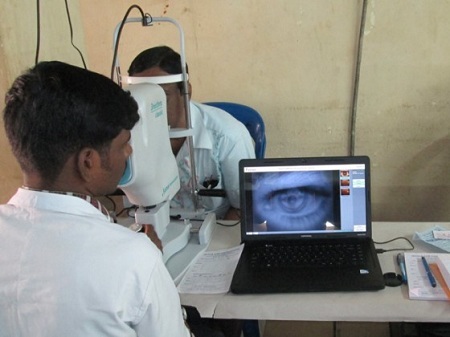Gates Foundation Alters Course in Pursuit of Breakthroughs: New Grand Challenges reflect that innovation and scale go hand in hand
I am an impatient optimist. New ideas excite me to the extent that they are scalable and actionable. There is no other sector where the urgency is more important than health care. And especially in emerging markets.
Last week, I had the opportunity to attend the Grand Challenges Annual Meeting hosted by the Bill and Melinda Gates Foundation. The global health junkie in me was ecstatic to be surrounded by the movers and shakers of global development. Bill and Melinda Gates truly believe innovation is the key to solving some of the world’s most intractable problems, which is why they launched Grand Challenges (GCs) in 2005. GCs are a family of initiatives fostering innovation to solve key global health and development problems. While the intention was good, the execution has hit some roadblocks.
Ten years ago, the Bill and Melinda Gates Foundation opened its pockets to fund scientific research from all over the world that would solve their original 14 GCs, which ranged from “developing needle-free delivery systems” to “developing a biological strategy to deplete or incapacitate a disease-transmitting insect population.” Not surprising, after announcing that they would be granting a total of $200 million to the program, scientists everywhere lined up to get a slice of the pie. As of this year, more than 1,600 GCs grants have been made to science and technology innovators in 80 countries.
To kickstart this year’s meeting, which is the program’s 10th anniversary, Bill and Melinda announced three new Grand Challenges:
1. Putting women and girls at the center of development
2. Creating and measuring integrated solutions for health birth, growth and development
3. New interventions for global health
If these new GCs look broad and generalized to you, it’s because they are. An editor from The Economist identified the challenges as “sounding more like aspirations than proposals for action,” and I’d have to agree. Don’t get me wrong, these GCs are great – no one would say they are bad ideas – but wasn’t it the specificity of the ideas that made them so special? Perhaps it was due to past GCs projects only taking baby steps toward product development rather than sprints that called for a more general approach.
 To date, only a fifth of the original 44 programs are moving forward from lab to market. According to Tom Paulson from Humanosphere, Gates himself said that he “was pretty naive about the philanthropy’s original expectations for this initiative.” In an effort to get more traction, Gates told the crowd gathered for the meeting that applicants will now be required to partner with manufacturers, biomedical companies or others with expertise in product development before they’ll fund a project.
To date, only a fifth of the original 44 programs are moving forward from lab to market. According to Tom Paulson from Humanosphere, Gates himself said that he “was pretty naive about the philanthropy’s original expectations for this initiative.” In an effort to get more traction, Gates told the crowd gathered for the meeting that applicants will now be required to partner with manufacturers, biomedical companies or others with expertise in product development before they’ll fund a project.
(PACE and the Unitus Seed Fund are partnering in their work with start-ups like Hippocampus Learning Centres, right, in India. Photo courtesy of USAID)
During the event, Rajiv Shah, USAID administrator, also announced the PACE (Partnering to Accelerate Entrepreneurship) initiative, USAID’s new program bridging philosophies from both philanthropy and business. The program is designed work with early-stage investment companies, to hire scouts to find the next entrepreneurs with innovative solutions to the world’s key development problems and turn them into a promising enterprise. In fact, Unitus Seed Fund, the early-stage impact venture that I work for, just announced its India alliance with USAID to do just that.
At Unitus Seed Fund, our filter systems run on max power – every company that enters our pipeline goes through an intensive screening process. We check the basics of innovation, creativity and whether or not it helps those at the base of the economic pyramid. But our key filter is scalability. Companies, in order to be successful and impactful, have to be scalable. What’s the point of having an awesome pediatric clinic if you can only reach 100 kids? How much better would it be if you could reach 100,000 or 10 million?
 One of our recent health care investments, Welcare, has the potential to serve hundreds of thousands, with affordable eye-screening services saving thousands of people from going blind. A patient arrives in one of their 20 screening centers and has their eyes quickly screened by a locally trained technician. Using the machine’s Internet connection, the technician sends the images to a certified ophthalmologist who remotely reviews and reports back the diagnosis. This greatly reduces the operating costs, allowing eye screenings to be offered at an affordable price.
One of our recent health care investments, Welcare, has the potential to serve hundreds of thousands, with affordable eye-screening services saving thousands of people from going blind. A patient arrives in one of their 20 screening centers and has their eyes quickly screened by a locally trained technician. Using the machine’s Internet connection, the technician sends the images to a certified ophthalmologist who remotely reviews and reports back the diagnosis. This greatly reduces the operating costs, allowing eye screenings to be offered at an affordable price.
(An eye screening at Welcare, left. Photo courtesy of Unitus Seed Fund)
The location of the eye-screening center also plays an important role in reducing costs for patients. All centers are located within diabetes clinics or general hospitals to allow for on-premise, immediate screening. This company combines the best of both worlds – an affordable solution for the BoP and a way to scale to impact hundreds of thousands more.
Companies like this one will make the dynamic change that is necessary. So from one impatient optimist to another – let the innovative solutions roll!
Shreya Shirude is the digital marketing manager at Unitus Seed Fund.
Editor’s note: This blog originally appeared on the Unitus Seed Fund website and is reprinted here with permission.
- Categories
- Health Care
- Tags
- impact investing, scale
